
Saumya Khandelwal
Saumya Khandelwal is a New Delhi-based photojournalist whose work appears in TIME, National Geographic, The New York Times, and other leading publications. Her photography focuses on gender and environmental issues, with notable projects like Child Brides of Shravasti, which earned her the Getty Images Instagram Grant in 2017.
A nominee for the World Press Photo 6X6 Global Talent Program (Asia, 2019), Saumya has worked with Thomson Reuters and Hindustan Times. Her images have been exhibited globally, including at the National Gallery of Victoria (Australia), Getty Images Gallery (London), and the Foreign Correspondents Club (Hong Kong). She also collaborates with NGOs such as the Bill & Melinda Gates Foundation, Malala Fund, and Fairtrade Germany.
About Work
In this deeply evocative photo series commissioned by National Geographic, Saumya Khandelwal documents the lives of residents in Makuara Pattan, a cluster of villages on India’s border with Pakistan, isolated by the Ravi River. Her work captures the stark realities of people disconnected from essential infrastructure, where a lone boat becomes a community’s fragile lifeline. Through images of aging villagers, abandoned homes, and seasonal adversity, Khandelwal highlights the human cost of geographical and political boundaries. The series is a haunting meditation on neglect, resilience, and displacement—where the voices of the forgotten echo across 75 years of unchanged hardship. It compels viewers to confront the price of marginalization in a supposedly connected world.
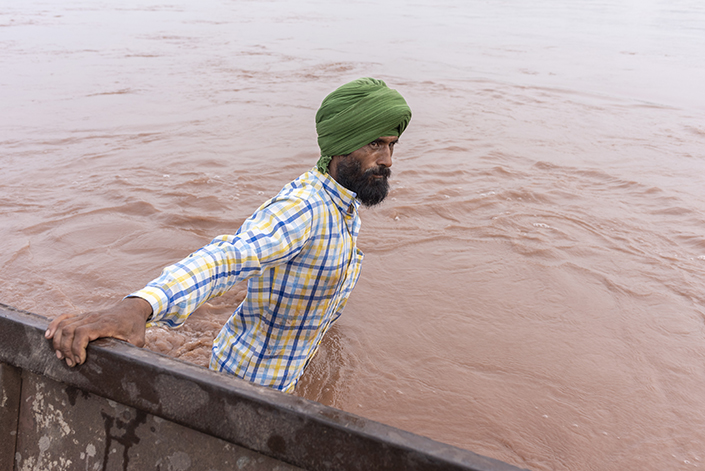
A man helps with pulling the boat out of the sand on a day when the water level was high at Makaura, India, July 22, 2022. Makaura Pattan is located across the Ravi river. While one side of the cluster is surrounded by the Ravi river, the other side is the fencing of the international border with Pakistan. This unusual geography puts it in an usual situation depriving it of access to basic necessities.
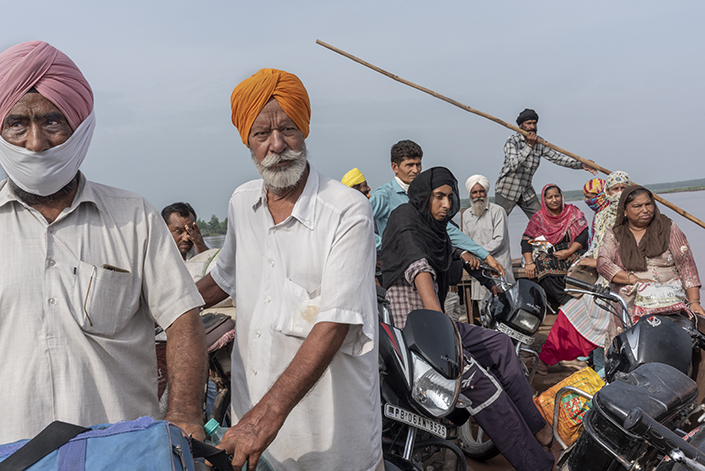
People arrive on a boat to Makaura Pattan, India, July 22, 2022. Makaura Pattan is located across the Ravi river. While one side of the cluster is surrounded by the Ravi river, the other side is the fencing of the international border with Pakistan. This unusual geography puts it in an usual situation depriving it of access to basic necessities.
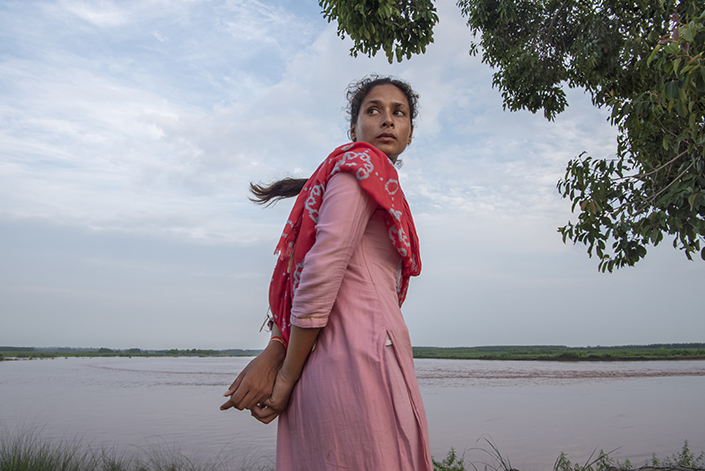
Payal Mahajan, 19, looks at the swelling Ravi river at Toor village, India, July 25, 2022. Payal Mahajan lost her mother to child birth. When her younger brother Sumit was born, Payal’s mother, Priya Mahajan died due to excessive blood loss. Payal said, ‘if there was a bridge here, maybe my mother could be saved.’ Payal had enrolled herself in a Bachelor in Computer Application course but had to dropout after the first semester because her elder sister got married and she was obligated to take care of the house chores. Now Payal aspires to do a shorter term computer course or one in fashion designing.
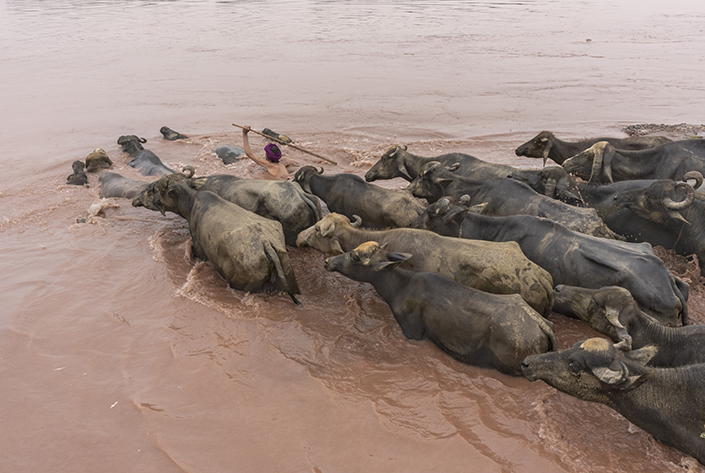
Cattle herder swims with his cattle in Ravi river to cross over to Makaura Pattan from Makaura, India, July 29, 2022. Makaura Pattan is located across the Ravi river. While one side of the cluster is surrounded by the Ravi river, the other side is the fencing of the international border with Pakistan. This unusual geography puts it in an usual situation depriving it of access to basic necessities.
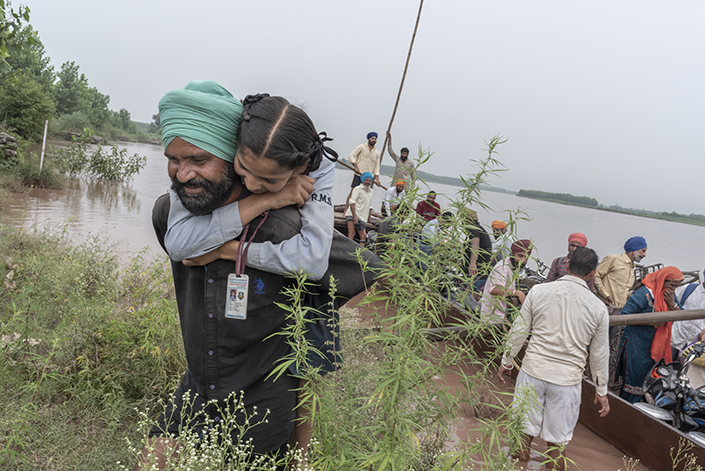
Sanamdeep Kaur, 13, arrives from a boat crossing the last bit on her father’s back because of the high water levels in the Ravi river in Makaura, India, July 29, 2022. Makaura Pattan is located across the Ravi river. While one side of the cluster is surrounded by the Ravi river, the other side is the fencing of the international border with Pakistan. This unusual geography puts it in an usual situation depriving it of access to basic necessities.

